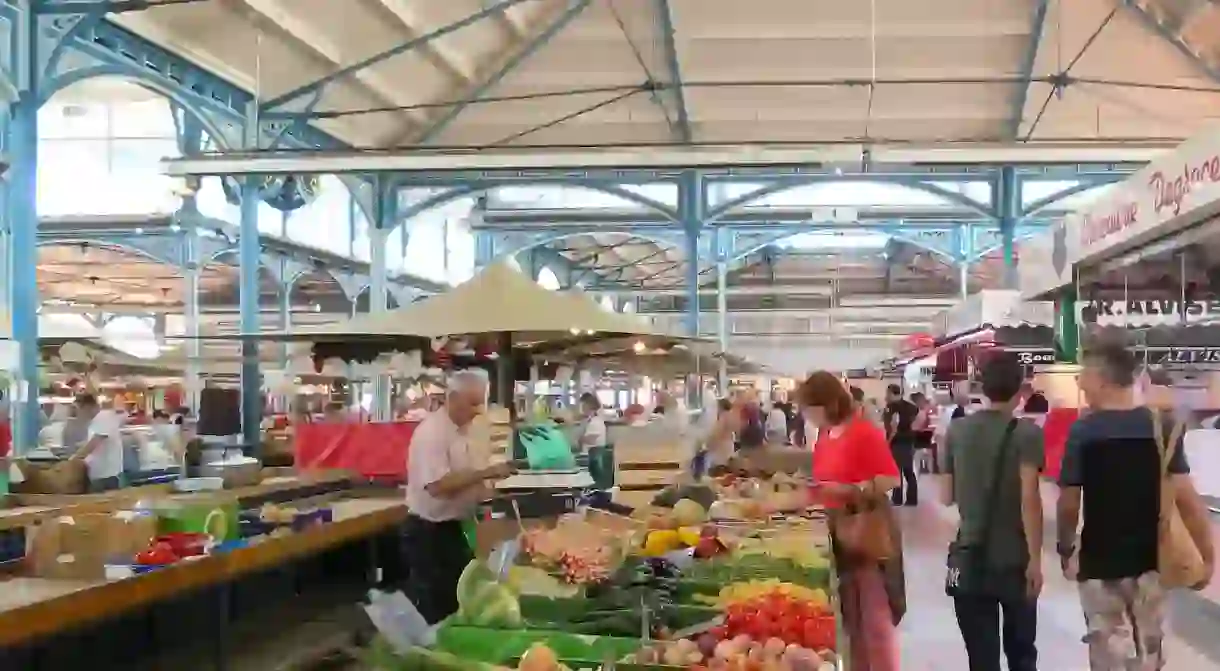The Essential Guide to Dijon's Les Halles Market

On your visit to Dijon be sure to include the renowned Les Halles market on your list of must-see places. The lively stalls are a hub of local life, right at the heart of the old town surrounded by great cafés and restaurants. All the senses should be at the ready to enjoy the aromas, sights and sounds, and don’t forget to lift your gaze to admire the listed 1800s iron structure of the elegant covered market.

The counters are brimming with the best produce from France and beyond. Burgundy is known for its gastronomy and you won’t be disappointed with the selection of cheeses, charcuterie like the tantalizing jambon persillé — a laborious ham aspic marbled with garlic and parsley — as well as reheat-and-serve prepared dishes such as boeuf bourguignon or coq au vin.

Les Halles is open mornings on Tuesday, Thursday (inside stalls only) and Friday, plus all-day Saturday when more than 200 stalls spill out onto the pedestrianized adjacent street. Two main aisles criss-cross the permanent stands and vendors also set up fold-up tables both inside and out under the eaves of the beautiful building.

There is a really good informal café in the center of the market. La Buvette des Halles is very popular with the locals so most of the time it’s elbow-room only — but completely worth it to take a break with a glass of local wine and some nibbles.
Rules of Engagement
A French market has its unspoken code of etiquette — but there’s no need to learn it as the rules are probably only really mastered by the long-term patrons. Not to worry, with just a few pointers you’ll be able to make the best of the experience.
Bring your own bag or basket. France is tightening up on the use of plastic bags thanks to environmental concerns so people carry their own bags and baskets. Wheeled shopping bags are a local favorite.

Be polite but assertive. You can’t go wrong saying bonjour and merci, plus an audible s’il-vous-plaît if you need to get the vendor’s attention. Don’t be put off if they don’t smile back, it’s just a cultural difference. Most of the artisans behind the counter are skilled, well-respected professionals, they are concentrating on their job and have a loyal following. If you need proof of popularity, just witness the speed at which the jambon persillé disappears from the counter chez Alviset or Vautrin. When you arrive at each stall pay attention to who is ahead of you. When it’s your turn, don’t allow room for confusion, make eye contact, raise your index finger, and off you go.

Don’t hesitate to ask. You will see people all around you tasting, prodding, smelling. Look for the imperfect. The most photogenic strawberries are not necessarily the tastiest. Once you try the smaller irregular gariguette strawberries in season you’ll never look at their more glamorous partners again. If you’re not familiar with the produce –and provided the vendor is not too busy – they will be happy to give you a few pointers on the best way to prepare your dish, and their advice is usually right on the money.

Get there early. Pros and epicurean locals buy fresh and in season. They know what to get and they descend on the best products like seagulls on a fishing boat so by 11am the top pickings will be nowhere to be found. You can use this habit to your advantage. Just get there with plenty of time, observe where the lines start to form and you’ll know that you are onto a local favorite.













